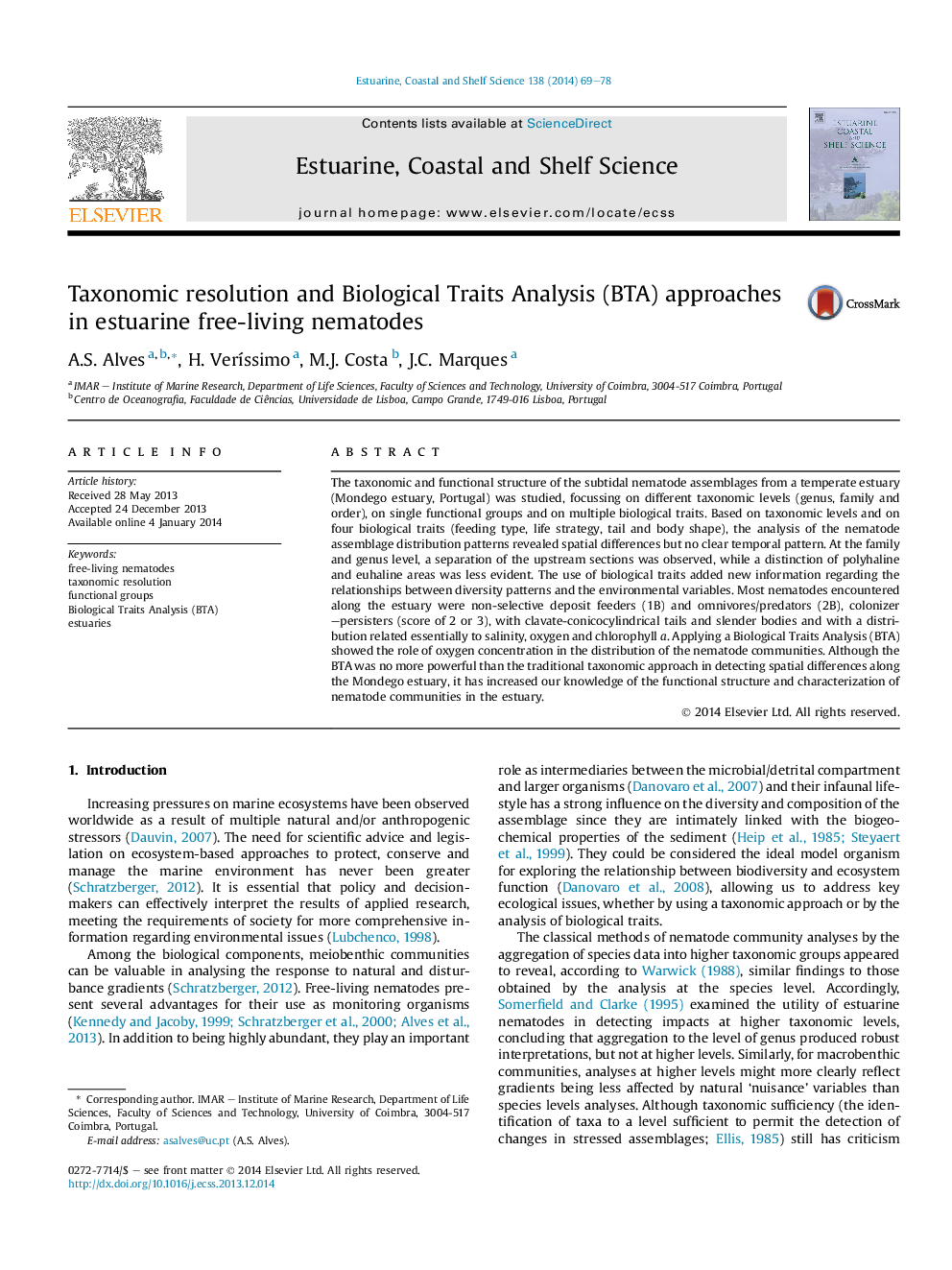| Article ID | Journal | Published Year | Pages | File Type |
|---|---|---|---|---|
| 4539805 | Estuarine, Coastal and Shelf Science | 2014 | 10 Pages |
The taxonomic and functional structure of the subtidal nematode assemblages from a temperate estuary (Mondego estuary, Portugal) was studied, focussing on different taxonomic levels (genus, family and order), on single functional groups and on multiple biological traits. Based on taxonomic levels and on four biological traits (feeding type, life strategy, tail and body shape), the analysis of the nematode assemblage distribution patterns revealed spatial differences but no clear temporal pattern. At the family and genus level, a separation of the upstream sections was observed, while a distinction of polyhaline and euhaline areas was less evident. The use of biological traits added new information regarding the relationships between diversity patterns and the environmental variables. Most nematodes encountered along the estuary were non-selective deposit feeders (1B) and omnivores/predators (2B), colonizer–persisters (score of 2 or 3), with clavate-conicocylindrical tails and slender bodies and with a distribution related essentially to salinity, oxygen and chlorophyll a. Applying a Biological Traits Analysis (BTA) showed the role of oxygen concentration in the distribution of the nematode communities. Although the BTA was no more powerful than the traditional taxonomic approach in detecting spatial differences along the Mondego estuary, it has increased our knowledge of the functional structure and characterization of nematode communities in the estuary.
